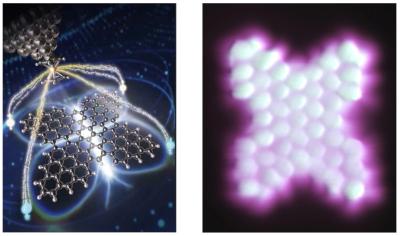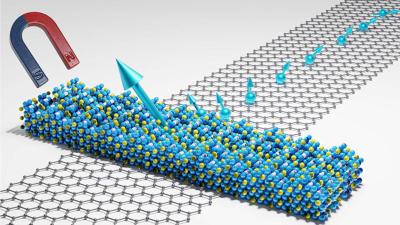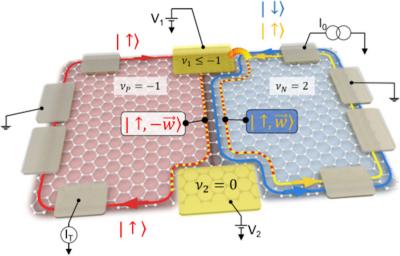Researchers develop magnetic nanographene with a unique butterfly shape that could advance quantum technologies
Researchers from the National University of Singapore (NUS), and Czech Academy of Sciences recently developed a new design concept for creating next-generation carbon-based quantum materials, in the form of a tiny magnetic nanographene with a unique butterfly-shape hosting highly correlated spins. This new design has the potential to accelerate the advancement of quantum materials which are pivotal for the development of quantum computing technologies.
A visual impression of the magnetic “butterfly” hosting four entangled spins on “wings” (left) and its corresponding atomic-scale image obtained using scanning probe microscopy (right). Image credit: NUS
Magnetic nanographene, a tiny structure made of graphene molecules, exhibits remarkable magnetic properties due to the behavior of specific electrons in the carbon atoms’ π-orbitals. By precisely designing the arrangement of these carbon atoms at the nanoscale, control over the behavior of these unique electrons can be achieved. This renders nanographene highly promising for creating extremely small magnets and for fabricating fundamental building blocks needed for quantum computers, called quantum bits or qubits.


